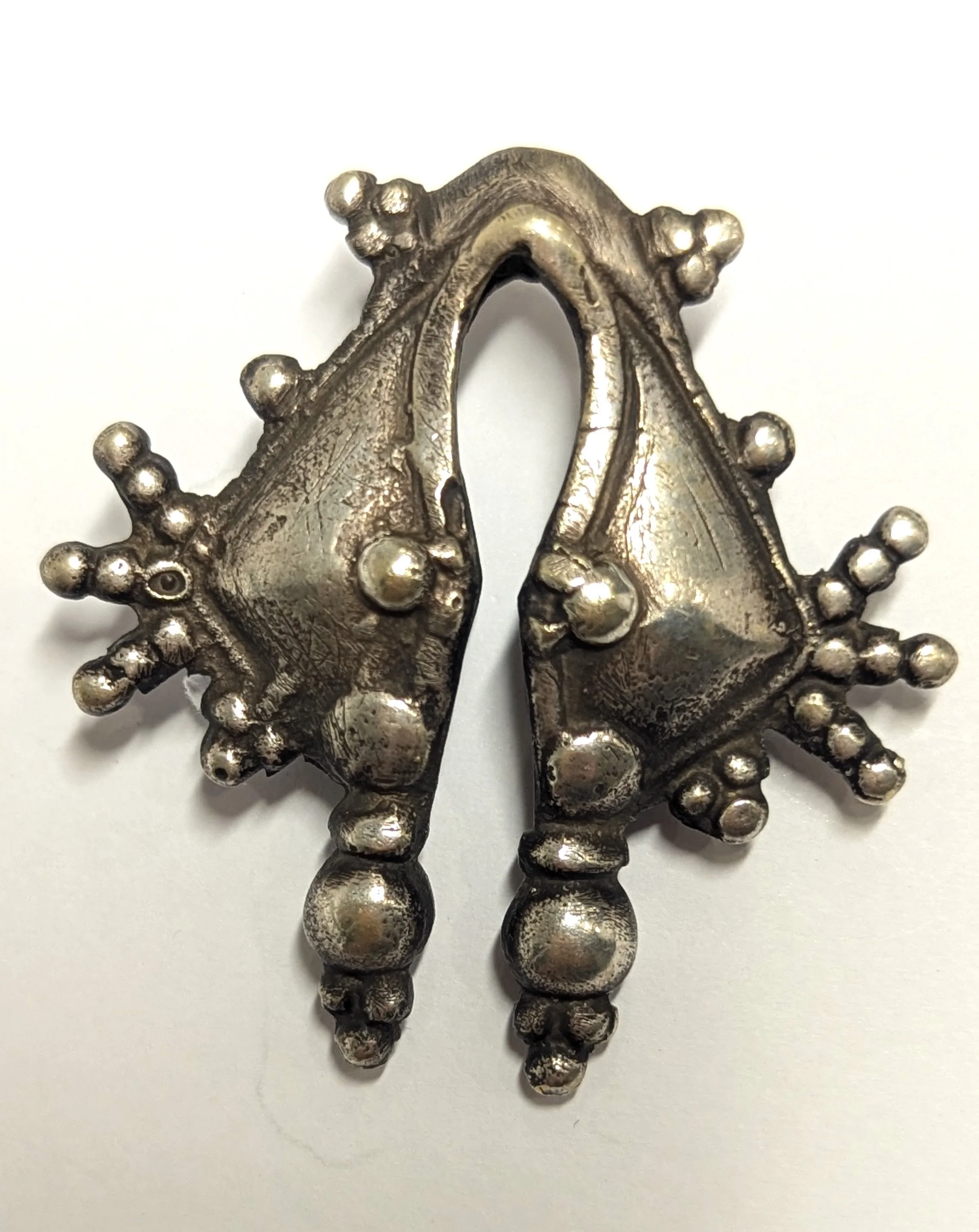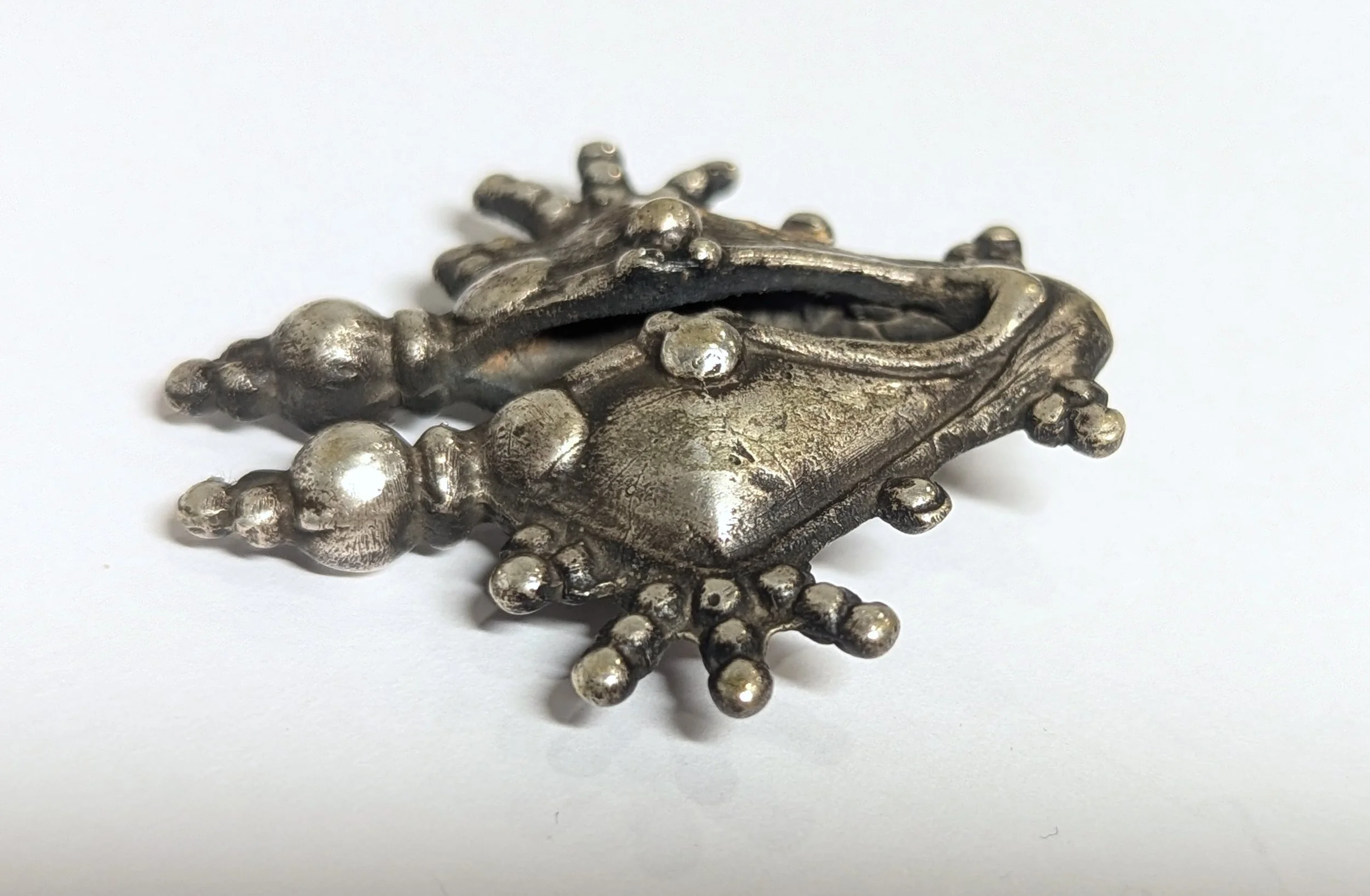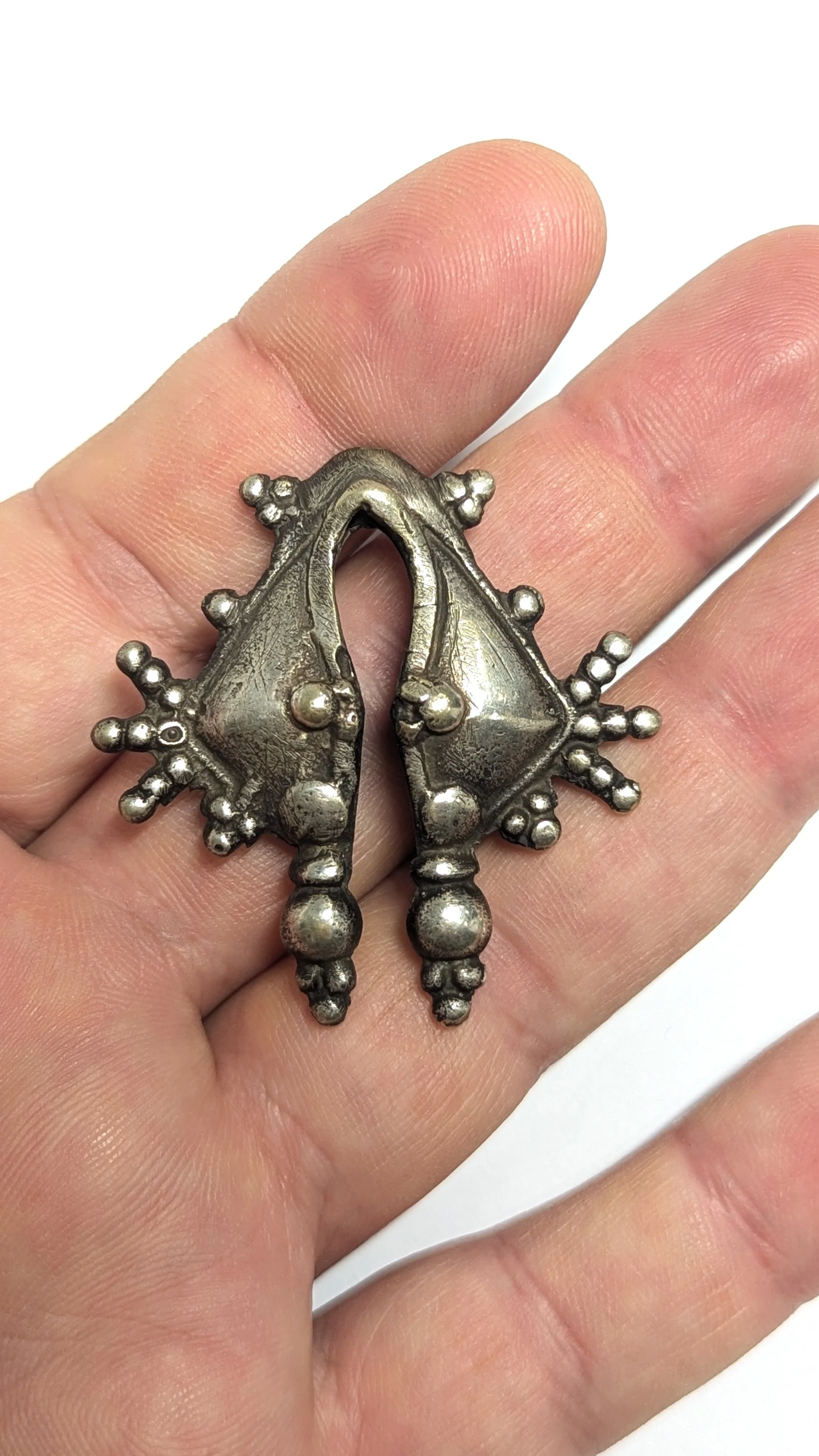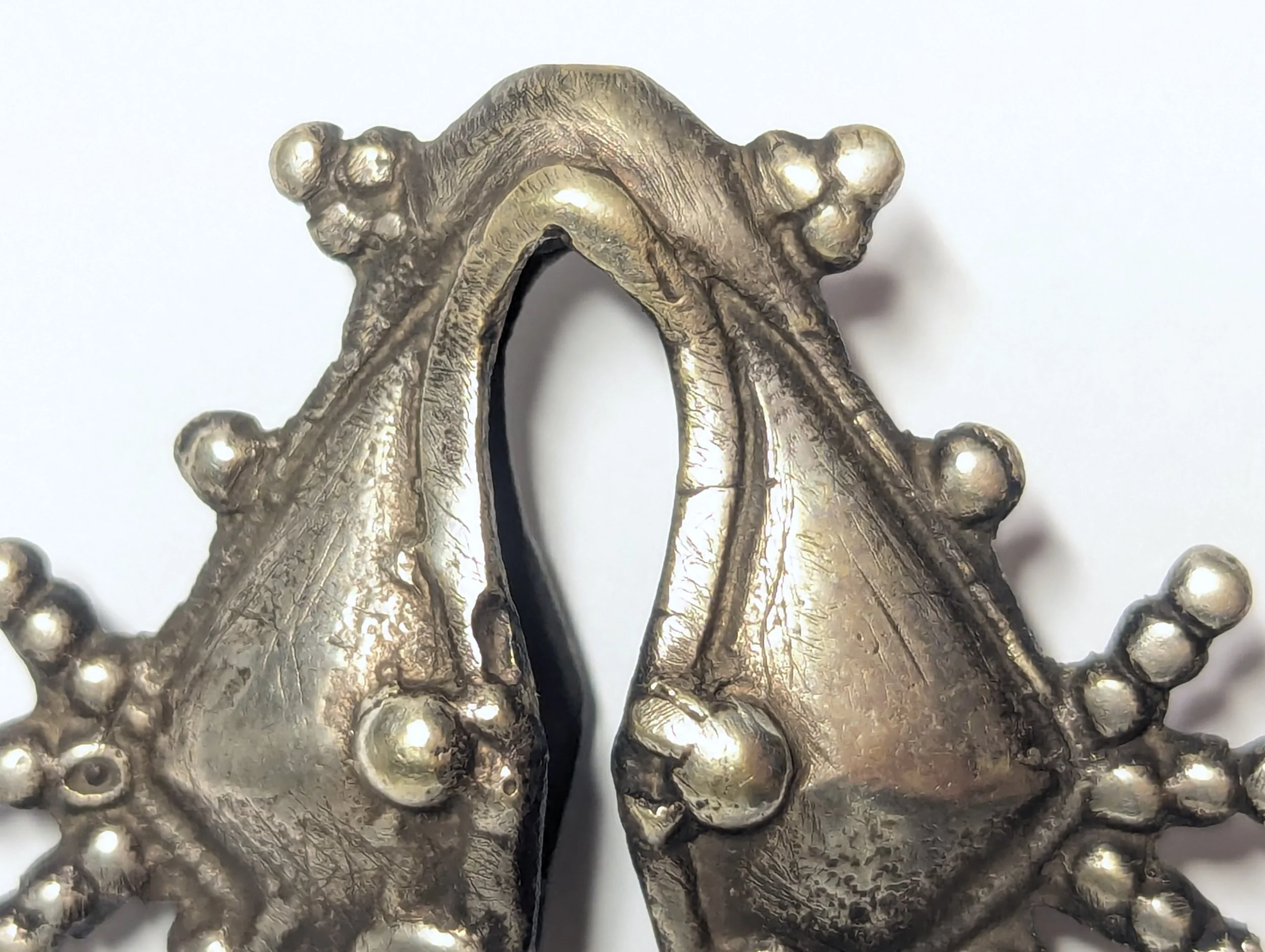Antique Sumbanese Mamuli Pendant - Ritual Fertility Symbol, Silver Patina
Antique Sumbanese Mamuli Pendant - Ritual Fertility Symbol, Silver Patina
MEASUREMENTS: 1.77" x 1.77" x 0,03" (45 mm x 45 mm x 8 mm). Weight: 23 g
This Sumbanese ceremonial ornament, a variant of the Mamuli, showcases a more abstract and stylized design, emphasizing the traditional symbol of the female vulva, often associated with fertility and ancestral connections in Sumbanese culture.
The piece has a bi-lobed form with a central void, symbolizing the female genitalia. The outer edges are adorned with intricate, rounded protrusions, resembling abstracted hands or natural forms, which are often interpreted as symbolic guardians or protective forces.
The material appears to be metallic, possibly silver or bronze, with a rich patina that ranges from a smooth, darkened silver to areas of subtle tarnish, reflecting its age and usage in ritual contexts. The surface texture shows signs of wear and oxidation, adding to its ceremonial aura, with slight golden-brown patina spots.
This Mamuli likely served not just as an ornament but as a spiritual object, worn during important rituals or ceremonies, symbolizing the vital connection between the human and divine, especially related to fertility and life cycles.
PROVENANCE:
This Mamuli pendant comes from the collection of Mitsuharu-san, a Japanese manager who traveled extensively across Indonesia from the 1970s until his passing in 2022. Hailing from Hokkaido, Mitsuharu-san played a significant role in the development of the Japanese food chain "Hok-Ben" (Hokka-Hokka Bento), which grew to over 140 locations across Java and Bali. Mitsuharu-san’s frequent travels across Indonesia, particularly to the smaller Sunda Islands—such as Lombok, Flores, Sumba, Timor, and Sulawesi—ignited his passion for Indonesian tribal art. Over the years, he curated a remarkable collection of ethnic jewelry from East Indonesia, of which I have had the honor of acquiring select pieces that I now proudly offer here on eBay.
Mamuli are ornate metal ornaments crafted by the Sumba people of Sumba, Indonesia. These pieces are particularly important in the megalithic societies of western Sumba, such as the Anakalang society. The distinctive shape of Mamuli symbolizes the female genitalia, representing fertility and the role of women as life-givers. Mamuli are highly valued as heirloom pieces, playing a significant role in ritualistic exchanges during important ceremonies. Mamuli can either be simple (lobu) or decorated (karagat). The lobu mamuli typically have a diamond-shaped body with a concave center, featuring a round hole and vertical slit symbolizing female sexuality and reproductive power. In contrast, the more ornate karagat mamuli, also referred to as ma pawisi ("those with feet"), have additional finials at the base of the diamond shape, often giving them an omega-like appearance. These finials are typically adorned with figures such as roosters, cockatoos, horsemen, buffalo, goats, skull trees, or warriors, representing male power and greatness. Hence, the karagat mamuli are viewed as masculine, while the lobu mamuli are considered feminine. During the colonial period, more elaborate, Baroque-inspired Mamuli were created, featuring complex battle scenes and sometimes movable parts.







